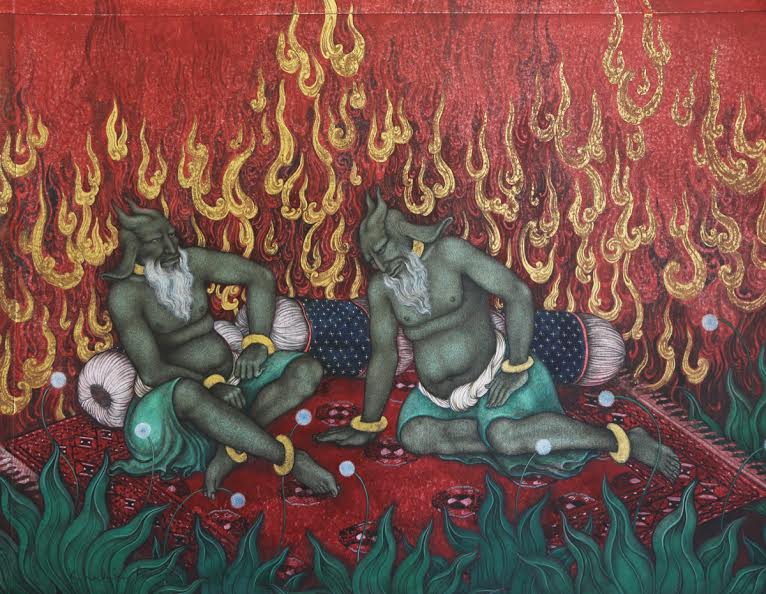

This exhibition brings together the works of six artists who have witnessed conflict to express ‘quiet acts of dissent’, writes Neha Pant
Dissensus, an ongoing art exhibition at Latitude 28 has a unique theme. Besides contextualising the work of young artists alongside some eminent masters from the field, some of whom are exhibiting in India for the first time. The exhibition is taking on conflict and identity by showcasing pieces that can be termed only as quiet voices of dissent. Deeply personal, the art resonates with the trauma of someone who has lived through chaos. A lot of the pieces on display have the intimate, detailed style of the miniature that ‘evoke the marginal location of their themes,’ this style also becomes the unifying factor that brings the show together.
Of the six artists showcasing, Priyanka D’Souza is the young protégé, who responds to deeply political and social contemporary issues through work that is inspired by Mughal miniatures. Her work which is her response to Manash Firaq Bhattacharjee’s poem, No Urdu in Dilli, Mian is on display alongside Veer Munshi’s collaboration with Kashmiri craftsmen —another instance of maintaining continuity between tradition and contemporary liberal, humanist ideas. Kashmir is Munshi’s hometown and he views the war-like situation from the perspective of an “outsider-insider, where the personal becomes the political in order to condemn the human loss, whether it be a soldier or a civilian, he says.”
Also presented are works by Nepalese artist, Hitman Gurung, Australia-based artist Khadim Ali, who was recently featured in Art Asia Pacific’s list of top 40 artists under 40 in the Asia Pacific region and acclaimed artist Waseem Ahmed. ‘Dissensus’ also marks the first India exhibition for Iranian artist Neda Tavallaee, who addresses her feminist concerns through the language of Persian miniatures. “There has always been a sense of mystery about women in the Middle East perhaps because of the culture that requires us to hide our bodies, emotions and thoughts or the taboos forced upon us through time. Behind this body of work is the lack of heroes in our society….I decided to use pages of the Shahnameh, a book abundant with tales of heroism and patriots as the background in contrast with the image of the damsel in distress, symbolic of Hawa (eve in Islam) who has to solve all her problems by herself and seek justice alone,” she says.
Check out the sbcltr preview.

Khadim Ali Title: Forlorn Foe 9 Size: 21″ x 17″ Medium: Gouache and gold leaf on wasli paper Year: 2016

Hit Man Gurung, We are in War without Enemies Size: 94 x 141.7 x 2 inches Medium: Acrylic, stippling drawing, print on canvas